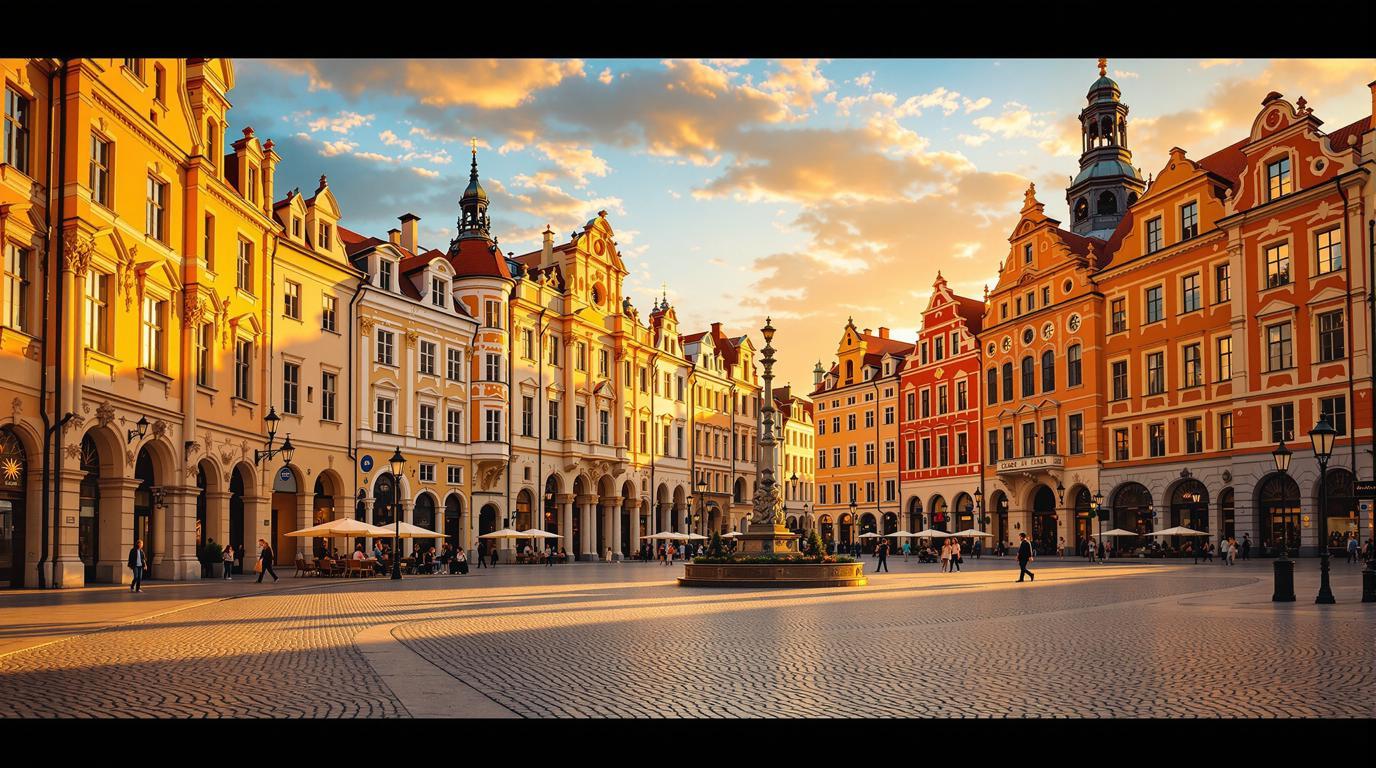Warsaw is more than just Poland’s political heart—it’s a resurrection story unlike any other in Europe. The city’s Old Town, recognized by UNESCO, stands as the only example in the world of an entire historic district meticulously reconstructed from ruins. What many visitors don’t realize is that 85% of Warsaw was deliberately destroyed during World War II, with architects later rebuilding it using 18th-century paintings as their blueprint.
A phoenix city with an incomparable survival story
Walking through Warsaw’s Old Town feels like stepping into a medieval fairy tale, yet almost everything you see was rebuilt after 1945. This isn’t just preservation—it’s resurrection. The painstaking reconstruction represents perhaps humanity’s most defiant statement against those who sought to erase a culture from existence.
“When they destroyed our monuments and buildings, they thought they destroyed our spirit. Instead, they created a nation of architects and historians,” explains Marek Nowicki, a local restoration expert who leads specialized tours of the Old Town.
The royal residence that rose from ashes
The Royal Castle dominates Castle Square with its distinctive brick-red façade. Inside, the meticulously recreated royal apartments showcase Poland’s golden age. What’s remarkable is that citizens secretly hid original furnishings, artwork, and even doorknobs during the war, allowing for an authentic restoration that feels genuinely historic despite being rebuilt.
For the best views of this architectural triumph, climb the 136 steps of St. Anne’s Church bell tower. The modest 10 PLN fee rewards you with a panorama that contextualizes Warsaw’s remarkable rebirth.
Where piano notes float through garden paths
Łazienki Park offers respite from urban exploration with its neoclassical Palace on the Water seemingly floating on its own reflection. On summer Sundays, the park hosts free Chopin concerts beneath the composer’s monument, where classical notes drift through centuries-old linden trees and peacocks strut among picnicking locals.
The experience feels reminiscent of France’s hidden natural wonders, where culture and landscape create perfect harmony.
The controversial skyscraper with the best view in Poland
The Palace of Culture and Science—Stalin’s “gift” to Warsaw—remains a polarizing landmark. While some Poles see it as an unwelcome reminder of Soviet domination, others have embraced it as part of their skyline identity. The 30th-floor observation deck offers Warsaw’s most comprehensive views, stretching toward the Vistula River where modern glass structures now complement historic districts.
This juxtaposition of old and new is what makes Warsaw unique among European capitals, similar to how Siberia’s ancient Lake Baikal blends primordial nature with contemporary exploration opportunities.
A museum that makes history visceral
The Warsaw Uprising Museum uses interactive technology to immerse visitors in the desperate 1944 battle for Warsaw’s freedom. Walking through recreated sewer tunnels used by resistance fighters creates understanding no history book could convey. The wall of insurgent heartbeats—recordings from surviving fighters—provides an emotional connection to the city’s past that leaves visitors profoundly moved.
The vodka experience you didn’t know you needed
Polish culture cannot be fully appreciated without understanding its vodka traditions. The Polish Vodka Museum offers tasting experiences that explain how this spirit became intertwined with national identity. Learn proper toasting etiquette while sampling traditional flavors like żubrówka (bison grass vodka) that reveal Poland’s herbal traditions similar to the Mediterranean’s botanical wonders.
The neighborhood where artists reclaimed abandoned factories
Across the Vistula in Praga district, industrial decay has transformed into creative renaissance. Street art adorns Soviet-era apartment blocks, while former factories now house galleries, jazz clubs, and food halls. This area provides an authentic glimpse into Warsaw’s emerging cultural confidence.
“This neighborhood shows Warsaw’s true character—resilient, creative, always becoming something new from what was broken,” says Ania Kulik, a local street artist whose murals celebrate the district’s renewal.
Where chocolate flows like a river
The recently opened Wedel Chocolate Factory experience allows visitors to create personalized chocolate bars while learning about Poland’s sweet traditions. The aroma alone makes it worthwhile, reminiscent of how evolution creates remarkable specialization in isolated environments.
The river beach surprising first-time visitors
Few expect to find urban beaches in a Central European capital, yet Warsaw’s Vistula banks transform into sandy retreats each summer. Locals flock to waterfront bars and volleyball courts, creating a surprisingly Mediterranean atmosphere. As night falls, the illuminated skyline reflects in the water with drama rivaling Africa’s most spectacular natural light shows.
Warsaw exists in perpetual transformation—honoring its past while embracing an ambitious future. In a city where every brick in the Old Town represents defiance against attempted erasure, visitors discover that Warsaw’s greatest monument isn’t any single building, but rather the indomitable spirit that rebuilt them all.
